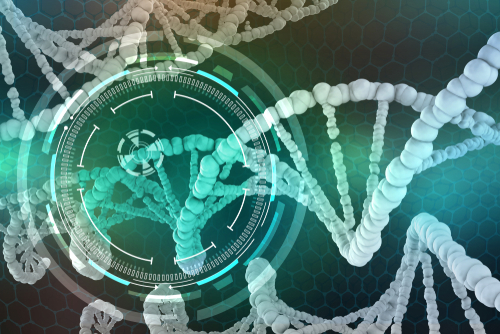FUS Mutation Common to Familial ALS Impacts DNA Repair Pathways in Motor Neurons, Study Shows

Mutations in a gene linked to familial amyotrophic lateral sclerosis (ALS), called FUS, affect the ability of motor nerve cells to repair damage to their DNA, a new study shows.
These findings suggest that therapies that enhance the repair of DNA damage may be of benefit to some ALS patients.
The study, “Mutant FUS causes DNA ligation defects to inhibit oxidative damage repair in Amyotrophic Lateral Sclerosis,” was published in the journal Nature Communications.
Mutations in several genes — superoxide dismutase 1 (SOD1), the TAR DNA Binding Protein-43 (TARDBP), Fused in Sarcoma (FUS) , and Chromosome 9 Open Reading Frame 72 (C9ORF72) — are among the most common genetic defects underlying familial ALS.
In healthy cells, FUS is predominantly located in the nucleus, and previous studies have shown it has a role in maintaining the integrity of the genome (our complete set of genes).
Damage to the genome and defects in the DNA repair system are associated with neurodegeneration, but whether mutations in the FUS gene impair these pathways in ALS patients is unknown.
Researchers first observed that a 70 percent loss of FUS in a neuroblastoma cell line led to a buildup of damaged DNA called single-strand breaks (SSBs), which were accompanied by cell vulnerability to damaging free radicals or reactive oxygen species.
In healthy nerve cells, the researchers also found that FUS protects the genome by facilitating its repair through the action of a protein, called PARP1, and its partner proteins, called XRCC1 and DNA Ligase III alpha (LigIII).
Researchers then investigated the correlation between the DNA damage seen in the spinal cord tissue of ALS patients and FUS. They found a strong correlation between impaired FUS function and DNA ligation defects (defects in repair mechanisms) in ALS patients, similar to what they saw with cells in the in vitro neuroblastoma cell line experiment.
Next, they evaluated the impact of FUS mutations on DNA damage repair mechanism in motor neurons, those largely affected in ALS patients. Using induced pluripotent stem cells from two patients with familial ALS carrying mutant versions of FUS, they induced their differentiation into motor nerve cells.
Results showed that these mutant motor neurons had an improper FUS location, with the protein outside of the nucleus, when compared to control (non-disease) cells.
Submitting the motor neurons to conditions that damage the DNA, researchers also saw that the mutant ALS cells delayed DNA repair to a significantly degree compared to controls cells. When researchers corrected the FUS mutations using the CRISPR/Cas9 technology, the DNA ligation defects were rescued.
Overall, “our results provide important molecular insights into a previously unknown DNA ligation defect in FUS-associated ALS,” researchers wrote.
These findings also suggest that therapies to enhance DNA repair mechanisms may offer a way to prevent or slow the progression of FUS-linked neurodegenerative diseases.






